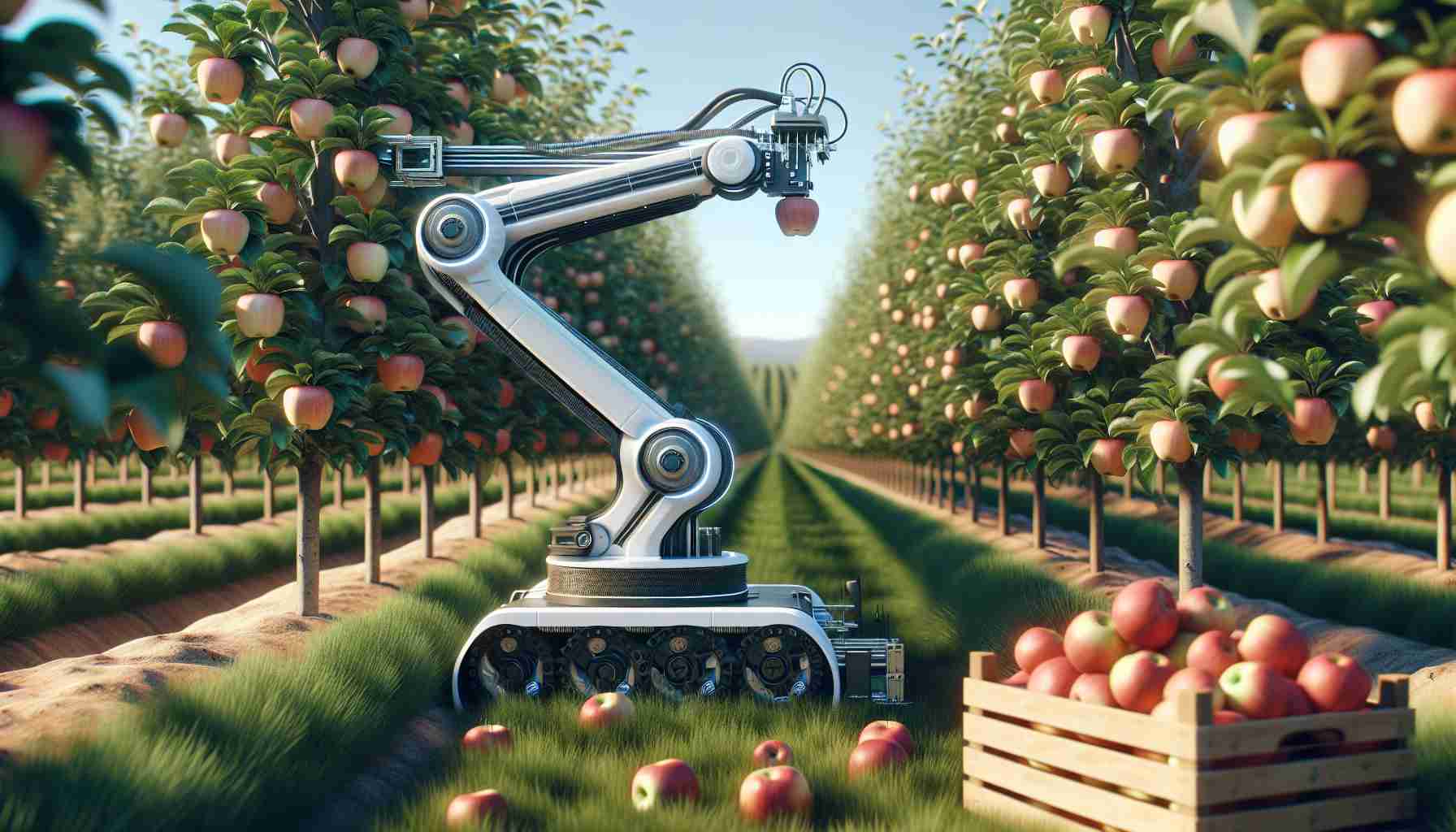In the picturesque orchards of West Michigan, a groundbreaking robotic apple picker, developed by Michigan State University (MSU), is transforming the fruit harvesting process. Collaborating with the United States Department of Agriculture (USDA), researchers are pioneering advancements to enhance the robot’s efficiency, focusing on artificial intelligence (AI) to ensure only the ripest apples are harvested while minimizing bruising during the process.
The initiative, spearheaded by Zhaojian Li, a distinguished associate professor, along with colleague Renfu Lu from the USDA, aims to address labor shortages and growing operational costs in the agriculture sector while maintaining the quality of harvested fruit. Their initial invention, launched in 2021, has since evolved into a sophisticated prototype capable of implementing AI and advanced engineering techniques to select and harvest apples with precision.
Utilizing an RGB-D camera, the robot captures detailed images that reveal both the color and depth of the apples on the trees. This technology allows the robot to identify ripe apples efficiently. The robot employs a gentle silicone grip to carefully detach the apple from the branch before transporting it to a conveyor for collection. Currently, it can harvest an apple in approximately 3.6 seconds, translating to about one ton of fruit daily.
As labor challenges persist in Michigan’s fruit farming industry, this innovative technology represents a promising solution, aimed at bolstering productivity and sustainability in agricultural practices. Researchers continue to pursue funding to further enhance this promising technology for practical use in commercial orchards.
Apple Picking Innovations: Tips, Life Hacks, and Fascinating Facts
The world of agriculture is evolving rapidly with technology, and the recent developments in robotic apple picking are a testament to this trend. If you’re intrigued by the intersection of technology and farming, here are some tips, life hacks, and interesting facts to enhance your understanding and experience related to apple picking and fruit harvesting.
1. Understand Ripe Apple Indicators:
Knowing when an apple is ripe can significantly improve your picking skills, whether you’re using robots or your own hands. Generally, a ripe apple will have a rich color (depending on the variety), and it should feel firm but give slightly to pressure. Learning to recognize these signs can help ensure that you’re only harvesting the best fruits.
2. Techniques for Hand-Picking Apples:
If you’re out in the orchard picking apples yourself, grab the apple lightly but firmly. Twist the apple gently while lifting it upwards to detach it from the branch. Avoid pulling straight down to prevent bruising, which robots like the one from MSU are designed to minimize.
3. Create a Fruit Harvesting Schedule:
In orchards, apples do not ripen uniformly. Organizing your picking based on variety and known ripening schedules can lead to more efficient harvests. Typically, early varieties can be harvested in late summer, while others will be ready through the fall.
4. Consider Sustainable Practices:
With the rise of robotic technology in agriculture, farmers can look to enhance their sustainability practices. Innovations that minimize waste and reduce energy consumption will contribute positively to the environment. Techniques such as integrated pest management and organic farming methods are also effective.
5. Explore DIY Gear:
You don’t need high-tech gadgets to make apple picking easier. Simple accessories like a picking pole with a basket or a large, sturdy bag can be useful. If you’re picking apples from higher branches, consider using a ladder for safety, and avoid overreaching to prevent accidents.
Fascinating Fact: The robotic apple picker developed by Michigan State University can harvest an apple in about 3.6 seconds, offering a remarkable efficiency that could revolutionize the fruit harvesting process. This tech-savvy approach addresses labor shortages while ensuring less damage to the fruit.
6. Know Your Varieties:
Different apple varieties have unique harvesting windows and uses—some are ideal for eating fresh, while others are better for cooking or making cider. Familiarize yourself with the apples in your area to optimize your picking efforts.
7. Get Involved in Local Orchard Programs:
Many orchards offer seasonal picking programs that allow the public to participate in harvesting. Not only is this a fun family activity, but it’s also a great way to learn about sustainable practices in agriculture firsthand.
For more insights and resources on agricultural innovations and practices, visit Michigan State University. Stay tuned to the advances in farming technology, as it not only shapes the future of food but can also provide valuable tools to enhance your own harvesting experience!








